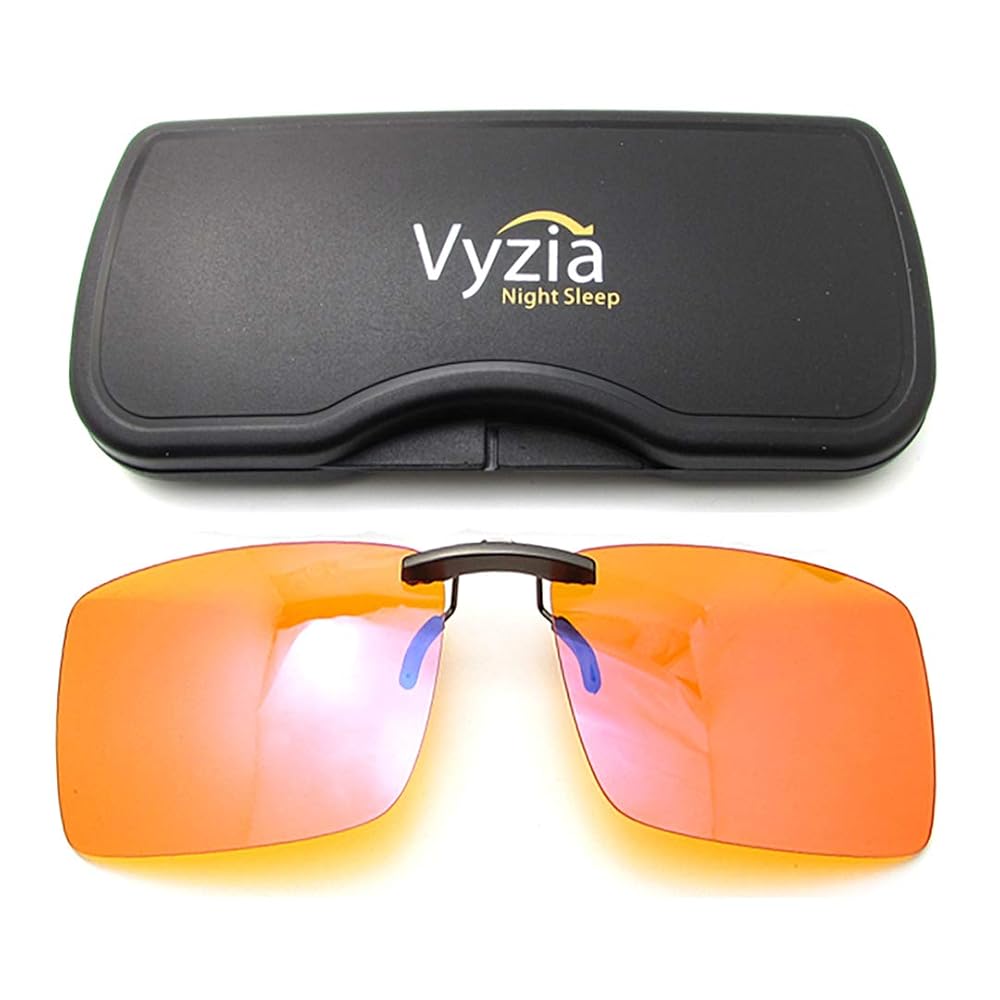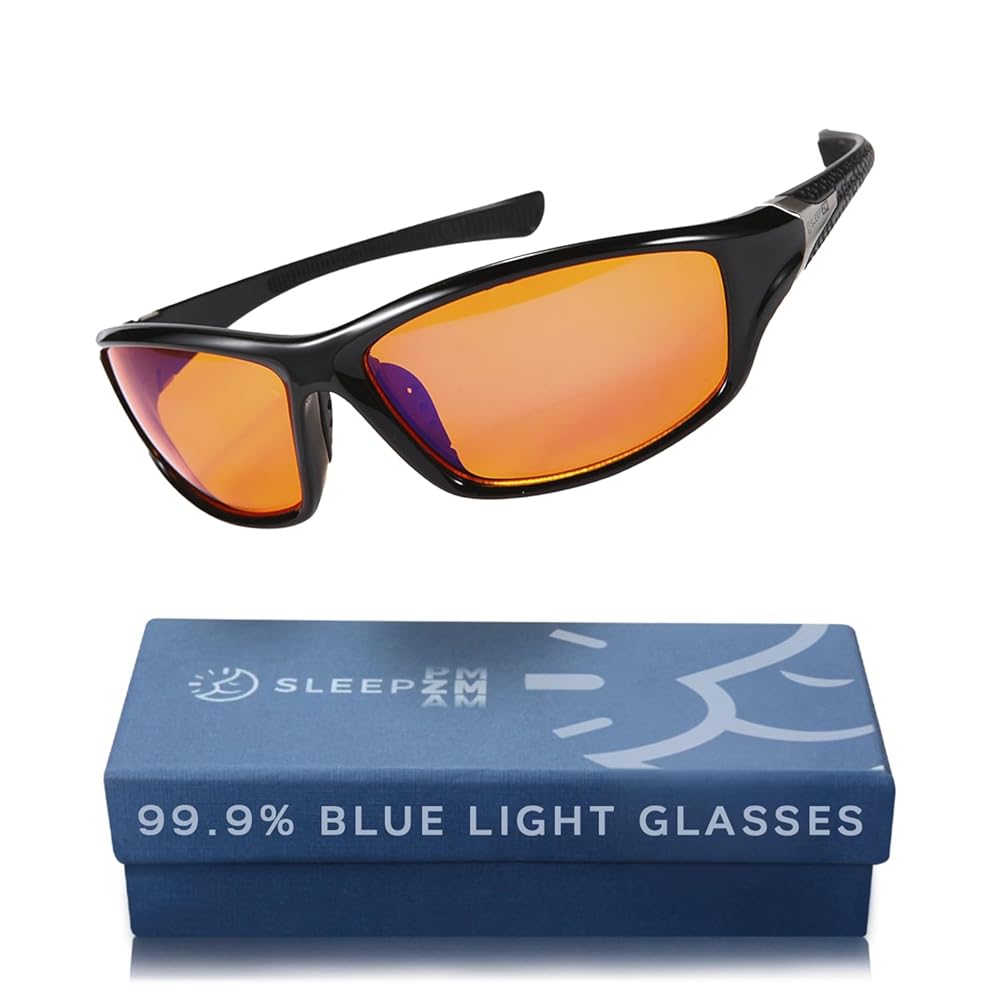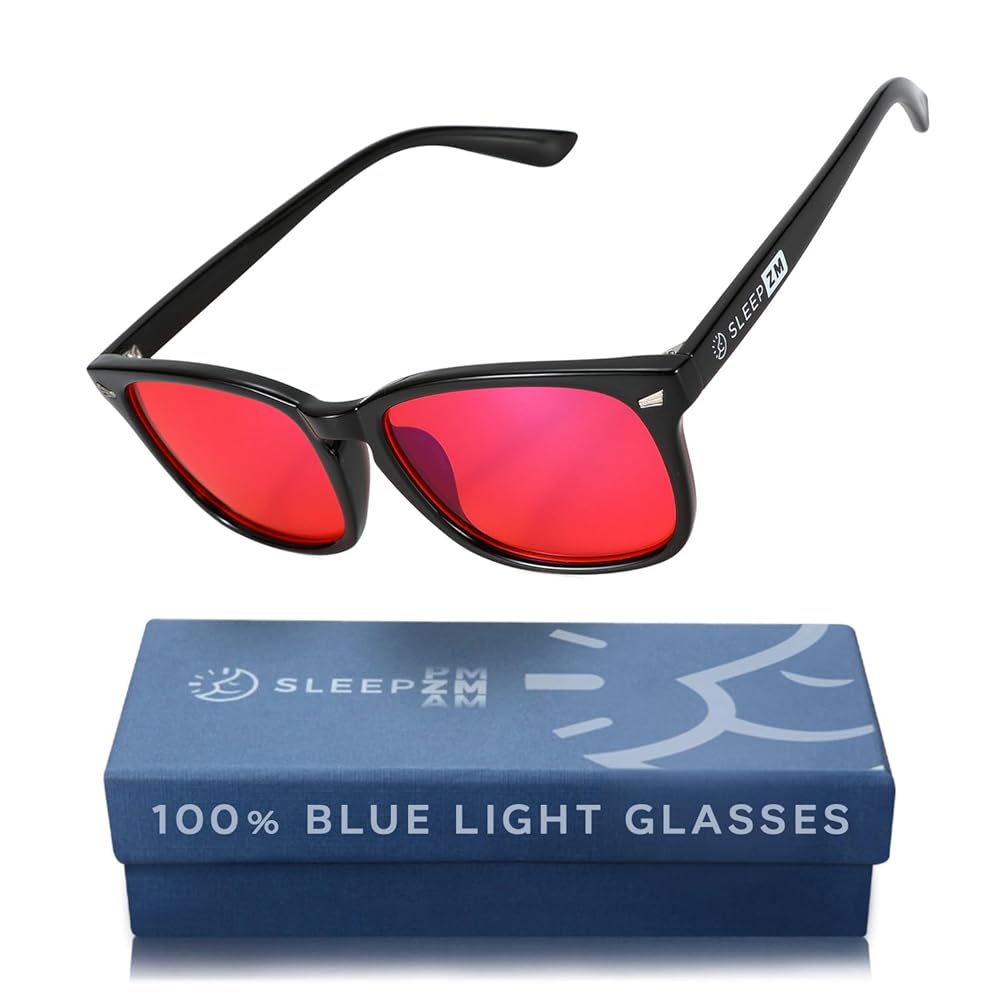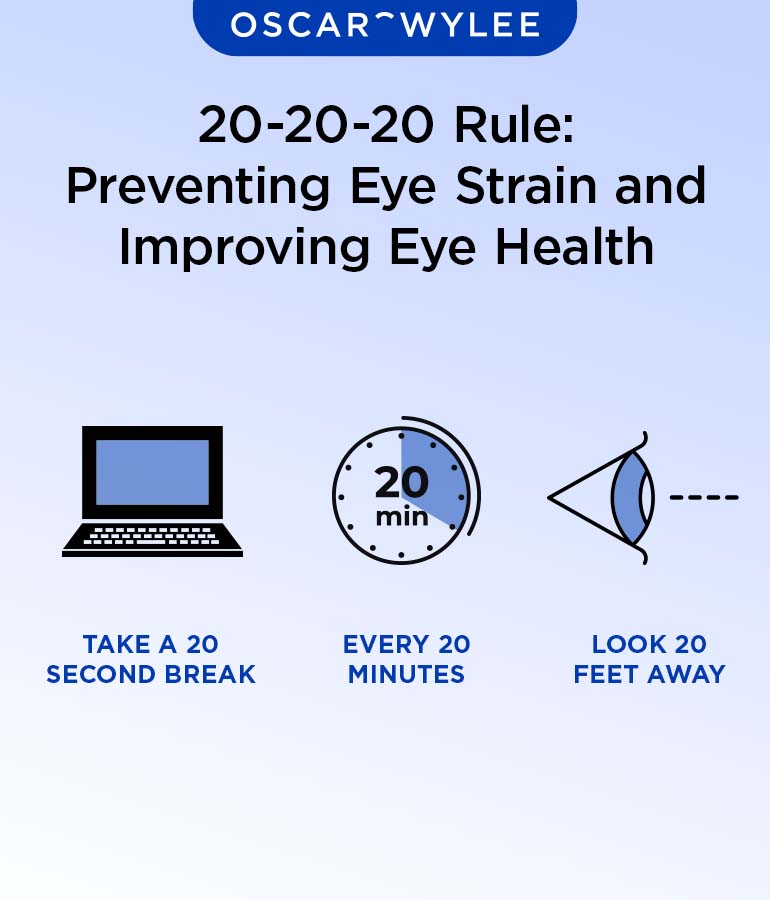Are you wondering if the hype around blue light filtering eyewear is justified? This guide cuts through the marketing noise to reveal the scientific truth, explaining that while they are a powerful tool for protecting sleep, the real cause of eye strain is often more complex. To combat evening screen exposure and support your natural sleep cycle, discover our curated collection of blue light reading glasses. You can even find functional pairs that align with a minimalist japanese glasses style, blending wellness with sophisticated design.
Understanding the Blue Light Controversy

With terms like “digital eye strain” and “screen fatigue” becoming common, it’s no wonder the conversation around blue light has intensified. But what’s the real story behind the hype? Let’s separate the scientific facts from the modern fads.
The Science of Blue Light Explained
Before you can decide if you need protection, it’s essential to understand what we’re up against. The science is more nuanced than you might think.
What is blue light and where does it come from?
Blue light is a portion of the visible light spectrum characterized by a short wavelength and high energy (HEV). It’s not a new phenomenon created by technology.
The sun is, by far, the most significant source of blue light we encounter. However, our modern lives have introduced many new indoor sources, including LED lighting, flat-screen televisions, and, most notably, the digital screens of our computers, tablets, and smartphones.
The surprising benefits of daytime blue light exposure
Is all blue light bad? Absolutely not. Exposure to natural blue light from the sun during the day is crucial for our well-being.
Daytime blue light exposure helps regulate our body’s internal clock, or circadian rhythm. It tells our brain to be awake and alert. According to a 2025 report from the Sleep Health Foundation, this exposure is vital for boosting mood, reaction times, and overall cognitive function.
Effects of blue light on eyes: Sun vs. Screens
The primary difference between blue light from the sun and from our screens is intensity and context. The amount of HEV light from the sun is exponentially greater than what your laptop emits.
The concern with digital devices isn’t necessarily the power of the light, but the prolonged duration and close proximity of the exposure, especially during evening hours. This constant, close-range exposure is what contributes to the symptoms we label as digital eye strain.
The Rise of a Modern Health Fad
Given our increasing reliance on screens, it was perhaps inevitable that a product promising a simple fix would emerge and capture the public’s imagination.
Why are blue light glasses suddenly everywhere?
The surge in popularity of blue light glasses can be directly linked to our skyrocketing screen time. As work, education, and social life moved increasingly online, so did concerns about the health effects.
Clever marketing highlighting digital wellness and the desire for any potential relief created a perfect storm. Suddenly, these glasses became a go-to accessory for students and professionals alike, transforming from a niche product into a mainstream health trend.
Examining the core claims: Eye strain relief and better sleep
Do these glasses actually work? Let’s look at the two biggest promises: reducing eye strain and improving sleep.
Many users do report subjective comfort and less fatigue when wearing them. However, the American Academy of Ophthalmology reiterated in 2025 that digital eye strain is complex, often caused by factors like infrequent blinking, poor screen contrast, and uncorrected vision issues, not just blue light itself. Addressing the root cause, such as ensuring your prescription is correct, is a critical first step. This applies to all eyewear, which is why finding accessible options like cheap prescribed sunglasses for outdoor protection is as important as managing indoor light.
The claim about sleep has more robust scientific backing. Multiple studies, including research highlighted by Harvard Medical School, show that blue light exposure in the evening can suppress the body’s production of melatonin, the hormone that signals it’s time to sleep. By filtering this specific light, you can help your body maintain its natural sleep-wake cycle. If you spend your evenings working late or scrolling on your phone, filtering blue light could be a key tool for a better night’s rest.
To see how you can directly combat the effects of nighttime screen use and potentially ease digital discomfort, explore a curated selection of blue light filtering eyewear.
Do Blue Light Glasses Actually Work? A Look at the Evidence

So, you’re staring at a screen, your eyes feel tired, and you’re wondering if that pair of trendy blue light glasses is the answer. It’s the million-dollar question in the world of digital wellness. Let’s break down the two main claims and see what the science actually says.
Claim 1: They Cure Digital Eye Strain
This is the most common reason people buy blue light filtering lenses. The promise is simple: wear the glasses, and your screen-induced headaches and tired eyes will disappear. But is it really the blue light that’s causing the problem?
The Real Cause of Your Discomfort: Computer Vision Syndrome
Most eye care professionals will tell you that the culprit isn’t blue light, but a condition called Computer Vision Syndrome (CVS), or digital eye strain. This isn’t a disease, but rather a collection of symptoms caused by the way we use our eyes during prolonged screen time.
Think about it: you blink less, you focus at a fixed, close distance for hours, and you might be dealing with poor screen contrast or glare. These factors, combined with any uncorrected vision problems, are what truly strain your eyes.
Computer vision syndrome symptoms: Headaches, dry eyes, and blurry vision
Do any of these sound familiar? They are the classic signs of CVS.
- Headaches: Often tension-type, located around the temples or behind the eyes.
- Dry, irritated eyes: Studies show we blink up to 66% less when looking at a screen, preventing our tears from properly lubricating our eyes.
- Blurry vision: Your eye muscles get fatigued from holding a constant focus, making it difficult to shift your gaze to different distances.
- Neck and shoulder pain: This often stems from poor posture as you lean into your screen.
What do ophthalmologists say about blue light glasses for eye strain?
The American Academy of Ophthalmology stated again in 2025 that there is no scientific evidence that the blue light coming from our device screens is damaging to our eyes. They recommend other, proven methods to reduce eye strain, such as taking frequent breaks (the 20-20-20 rule), adjusting screen brightness, and maintaining a proper distance from your monitor.
Ophthalmologists emphasize that having the correct vision prescription is one of the most critical factors in reducing strain. If your eyes are already working hard to compensate for uncorrected nearsightedness, farsightedness, or astigmatism, screen time will only make it worse. This principle applies to all your eyewear needs; for example, ensuring you have proper vision correction even in your outdoor eyewear is crucial, which is why people often seek out options like cheap prescribed sunglasses. The same logic applies to your primary reading glasses.
Scientific evidence: A review of studies on blue light filter effectiveness
When put to the test in controlled studies, blue light filters don’t seem to live up to the eye strain claims. A major review published in 2023 looked at multiple trials and found no significant, short-term advantages for blue-light filtering lenses in reducing digital eye strain compared to standard, non-filtering lenses. While some wearers report feeling more comfortable, researchers suggest this could be due to a placebo effect or other factors.
Claim 2: They Are a Powerful Sleep Aid
While the case for fighting eye strain is weak, the evidence for improving sleep is much stronger. This is where blue light glasses may actually have a measurable, biological effect.
The Sleep Science: Melatonin and blue light exposure
Your body has an internal clock called the circadian rhythm, and it’s heavily influenced by light. When it gets dark, your brain’s pineal gland starts producing a hormone called melatonin. Melatonin is what tells your body it’s time to get sleepy.
However, certain wavelengths of light can stop this process. Blue light, with its high-energy wavelength, is particularly effective at tricking your brain into thinking it’s still daytime, thus suppressing melatonin production.
How blue light effects on melatonin production cause circadian rhythm disruption
When you scroll through your phone or work on your laptop late into the evening, you’re blasting your eyes with artificial blue light. This sends a powerful “wake up” signal to your brain, right when it should be winding down.
This exposure delays the release of melatonin, which can shift your entire sleep-wake cycle. The result? You find it harder to fall asleep, and the quality of your sleep may suffer, leaving you feeling groggy the next day. This is known as circadian rhythm disruption.
Scientific evidence: Do blue light glasses help sleep?
Here, the science is much more favorable. Multiple studies have shown that wearing glasses that block blue light for a few hours before bedtime can lead to significant improvements in sleep.
For instance, a study involving evening smartphone users found that those who wore blue-light-blocking glasses produced more melatonin and reported better sleep quality and duration compared to a control group. The consensus is that if you can’t avoid screens before bed, filtering the blue light is a genuinely effective strategy to protect your sleep.
The counter-argument: Why experts remain skeptical
Even with positive evidence, some experts remain cautious. They argue that blue light glasses are just one tool and not a substitute for good “sleep hygiene.”
Practices like enabling “night mode” on your devices (which warms the screen color), dimming screen brightness, and, most effectively, putting all screens away an hour or two before bed are still considered the gold standard. While the glasses can help mitigate the damage from late-night screen use, they shouldn’t be seen as a free pass to ignore other healthy sleep habits.
If the sleep benefits sound compelling, or if you simply want to see if you experience more comfort during screen time, it’s worth exploring your options. Making an informed choice based on your specific needs is key. To find a pair that fits your routine, check out this wide selection of effective blue light reading glasses.
The Medical Verdict: Are Blue Light Glasses a Gimmick?

With so much marketing hype, it’s easy to get confused. Are blue light glasses a revolutionary health tool or just a clever sales tactic? To get a clear answer, we need to turn to the leading experts in eye health.
What the American Academy of Ophthalmology Concludes
When it comes to eye care, the American Academy of Ophthalmology (AAO) is one of the most authoritative voices. Their conclusions are based on extensive reviews of scientific evidence, not marketing claims.
The official recommendation on blue light blocking glasses
As of 2025, the AAO’s official stance is clear: they do not recommend any special blue light blocking glasses for computer use. They state that there’s no scientific evidence proving that the amount of blue light from digital device screens is harmful to our eyes.
Instead, the Academy points to the real cause of our discomfort: digital eye strain. They recommend practical, proven strategies like taking regular breaks (the 20-20-20 rule), using artificial tears, and, most importantly, ensuring your vision prescription is up to date.
Why they are not recommended for general use or eye protection
The key reason blue light glasses aren’t recommended for general use is that they solve a problem that doesn’t really exist for most people. The level of blue light from screens is a fraction of what you receive from natural sunlight, and our eyes are well-equipped to handle it.
They are not a form of “eye protection” in the way sunglasses are. Sunglasses protect your eyes from the intense, damaging UV radiation from the sun. Blue light lenses for computer use simply filter a small amount of visible light that has not been proven to cause damage to the eye.
Potential Disadvantages of Blue Light Blocking Glasses
Before you add a pair to your cart, it’s worth considering the potential downsides. While they are unlikely to cause harm, they aren’t without their drawbacks.
The financial cost versus unproven benefits
One of the most significant disadvantages is the financial cost. Lenses with blue light filters often come with a higher price tag than standard lenses. You are paying a premium for a benefit—reducing eye strain—that is not supported by robust scientific evidence.
For many consumers, this means spending extra money for what might only be a placebo effect, when that money could be better spent on a comprehensive eye exam to get the correct prescription.
The debate on wearing blue light glasses all day
Is it a good idea to wear blue light glasses all day? Experts suggest probably not. Exposure to natural blue light from the sun during the day is actually crucial for us. It helps regulate our circadian rhythm, boosts alertness, and elevates mood.
Continuously blocking this light might interfere with these natural processes. Just as you wouldn’t wear dark sunglasses indoors, it’s best to use specific eyewear for its intended purpose. The most critical factor for any eyewear is proper vision correction, whether for indoor reading or for specialized outdoor use, such as with prescribed sunglasses, which are designed for bright, sunny conditions.
Do yellow tint glasses for computer use have drawbacks?
Many blue light glasses, especially older or more aggressive models, have a noticeable yellow or amber tint. While effective at filtering blue light, these yellow tint glasses for computer use have a major drawback: color distortion.
This can be a significant problem for anyone whose work depends on accurate color perception, such as graphic designers, photographers, or video editors. For others, the altered color palette can simply be annoying and make the viewing experience less pleasant.
Who Might Actually Benefit?
While the case for general use is weak, there are specific situations and groups of people who might find genuine value in wearing blue light glasses. These applications are almost exclusively related to sleep regulation.
The limited case for shift workers and jet lag
People whose schedules go against the natural day-night cycle can face significant sleep challenges. For shift workers, wearing blue light blockers on the commute home in the morning can help trick their brain into thinking it’s nighttime, making it easier to fall asleep during the day.
Similarly, travelers can use them to combat jet lag. By wearing the glasses in the evening a few days before traveling east or upon arrival at a new destination, they can help their internal clock adjust more quickly to the new time zone.
How they might help with diagnosed circadian rhythm disorders
For individuals with medically diagnosed circadian rhythm disorders, such as Delayed Sleep Phase Syndrome (DSPS), blue light blocking glasses can be a prescribed tool. Under a doctor’s guidance, these glasses are often used as part of a comprehensive treatment plan that may also include timed light therapy.
In these specific medical contexts, the glasses help to precisely control light exposure to reset a person’s sleep-wake cycle. This is a targeted therapeutic use, far different from wearing them for general screen time.
If your primary concern is improving sleep after evening screen use, or if you are a shift worker trying to manage your sleep schedule, blue light glasses remain a compelling tool. Finding a pair that effectively filters blue light without distorting color too much is key. You can explore a range of options by visiting this collection of modern blue light reading glasses, which allows you to find a pair specifically designed to help protect your melatonin production before bed.
Smarter Solutions: Alternatives to Blue Light Glasses

While the debate around blue light glasses continues, experts agree on a set of highly effective, science-backed strategies that cost nothing. These alternatives address the root causes of digital discomfort and poor sleep, offering more reliable relief.
How to Reduce Digital Eye Strain Effectively
Before spending money on specialized eyewear, it’s crucial to master the fundamentals of digital ergonomics. These simple habits are the most recommended solutions by ophthalmologists for relieving tired, sore eyes.
Master the 20-20-20 rule for instant eye relief
The most famous and effective technique is the 20-20-20 rule. It’s simple: every 20 minutes you spend looking at a screen, you should take a 20-second break to look at something at least 20 feet away.
Why does this work? It gives the tiny ciliary muscles inside your eyes a much-needed break from the constant effort of focusing up close. This simple, regular reset can dramatically reduce the focusing fatigue that defines digital eye strain.
Optimize your workspace: Screen position and ambient lighting
How you set up your desk is just as important as taking breaks. Your computer screen should be about an arm’s length (25 inches) away from your face, and the top of the screen should be at or slightly below eye level. This posture prevents both eye and neck strain.
Furthermore, manage the light around you. Your screen should not be the brightest light in the room. Adjust your ambient lighting to match the brightness of your display and position your screen to avoid glare from windows or overhead lights. While managing indoor glare is about balancing light sources, tackling outdoor glare requires specialized eyewear. Fortunately, getting protection doesn’t have to be expensive, as you can now find great options for cheap prescribed sunglasses to protect your vision in bright sunlight.
The importance of blinking and using artificial tears
Did you know that you blink up to 66% less when staring at a screen? This is a major cause of the dryness and irritation associated with computer use. Make a conscious effort to blink fully and frequently.
If your eyes still feel dry, over-the-counter lubricating eye drops, also known as artificial tears, can provide significant relief. They help supplement your natural tear film, keeping your eyes comfortable during long sessions of screen time.
How to Protect Your Sleep in a Digital World
If your main concern is the impact of evening screen time on your sleep, there are more direct and effective solutions than simply wearing special glasses all day.
Blue light glasses vs screen filter: A direct comparison
So, which is better: physical glasses or a software filter on your device? For the sole purpose of protecting sleep, screen filters are often a more practical first choice. They are built directly into your devices, are completely free, and can be set to turn on automatically in the evening.
In contrast, a pair of glasses is an additional purchase and something you have to remember to wear. While glasses can filter light from all sources (including overhead LED lights), software filters tackle the primary source of concern—your screen—at zero cost.
Using built-in modes like Apple’s Night Shift and Microsoft’s Night Light
Most modern operating systems come with a built-in feature to solve this exact problem. On Apple devices, it’s called Night Shift. On Windows, it’s Night Light. Android has a similar feature, often called Eye Comfort Shield or Night Mode.
These modes automatically shift the color temperature of your display toward the warmer, yellower end of the spectrum in the evening. This reduces blue light emissions at the source, helping to prevent the suppression of melatonin, the hormone that signals your body it’s time to sleep.
The expert-recommended digital curfew: Powering down before bed
The most powerful strategy for protecting your sleep has nothing to do with technology. It’s the “digital curfew.” Sleep experts overwhelmingly recommend stopping the use of all backlit screens—phones, tablets, computers, and TVs—at least one to two hours before you plan to go to sleep.
This practice isn’t just about avoiding blue light; it’s about allowing your brain to wind down and disengage from stimulating content. Swapping your phone for a book (a real one, or on an e-ink reader) is one of the best things you can do for your sleep hygiene.
While these free strategies are the foundation of good digital hygiene, sometimes you need a solution that combines multiple benefits. If your evening routine involves reading on a screen and you need magnification, combining that with blue light filtering is a smart move. Explore our collection of blue light reading glasses to find the perfect pair that addresses both your vision and sleep concerns in one simple tool.
The Final Verdict: A Targeted Tool, Not a Universal Cure
After examining the scientific evidence and expert opinions, a clear picture emerges. Blue light glasses are not the all-in-one solution for every digital discomfort, but they serve as a highly effective tool for a specific and significant problem: sleep disruption. The key is to align the solution with the correct issue.
Here’s a summary of the essential takeaways:
-
For Digital Eye Strain, Look Elsewhere First: The consensus among ophthalmologists is that blue light from screens is not the primary cause of eye strain. The real culprits are factors related to Computer Vision Syndrome (CVS), such as reduced blinking, improper screen ergonomics, and uncorrected vision. Proven solutions like the 20-20-20 rule, optimizing your workspace, and ensuring your prescription is current are far more effective at providing relief.
-
For Protecting Sleep, They Genuinely Work: The most compelling case for blue light glasses is their ability to preserve your body’s natural melatonin production in the evening. By filtering the high-energy blue wavelengths that trick your brain into staying awake, they can help you fall asleep more easily and improve sleep quality, especially if you use screens before bed.
-
Expert Recommendations Are Nuanced: The American Academy of Ophthalmology does not recommend blue light glasses for preventing eye strain but acknowledges their utility in regulating the circadian rhythm. This makes them a valuable asset for specific groups like shift workers, frequent travelers combating jet lag, or anyone with a diagnosed sleep phase disorder.
-
Smart Alternatives Are Free and Effective: Before investing in specialized eyewear, implement free strategies. Use your device’s built-in “Night Mode” or “Night Shift,” and establish a “digital curfew” by putting screens away an hour before bed. These habits address the root causes of both sleep disruption and eye fatigue.
In conclusion, rather than viewing blue light glasses as a gimmick or a miracle, it’s best to see them as a specialized piece of equipment. If your eyes feel tired during the day, focus on ergonomic and behavioral changes. If you struggle to wind down after an evening of screen use, blue light filtering glasses are a science-backed solution worth considering to safeguard your sleep.
Leave a Reply